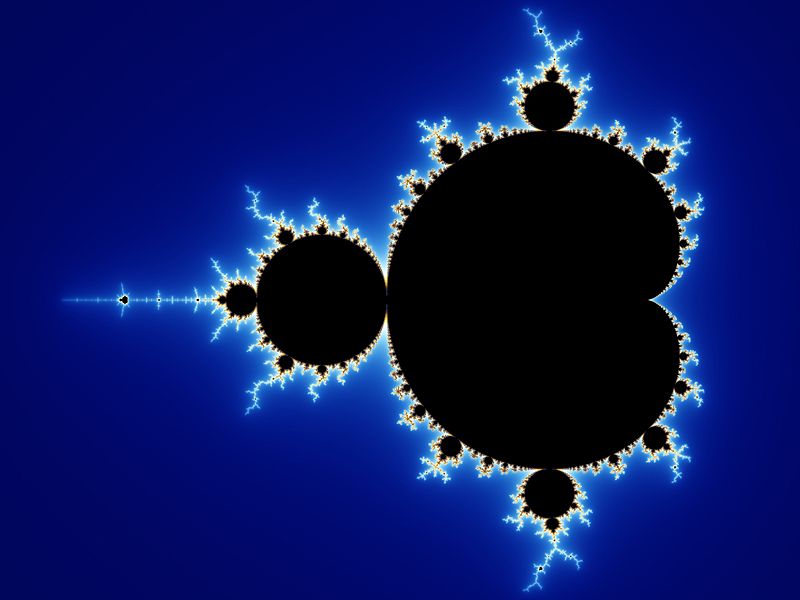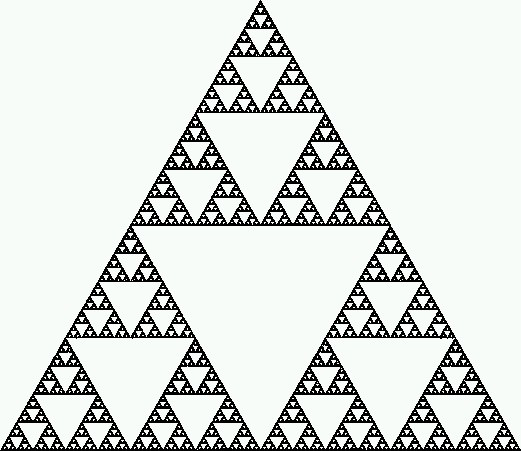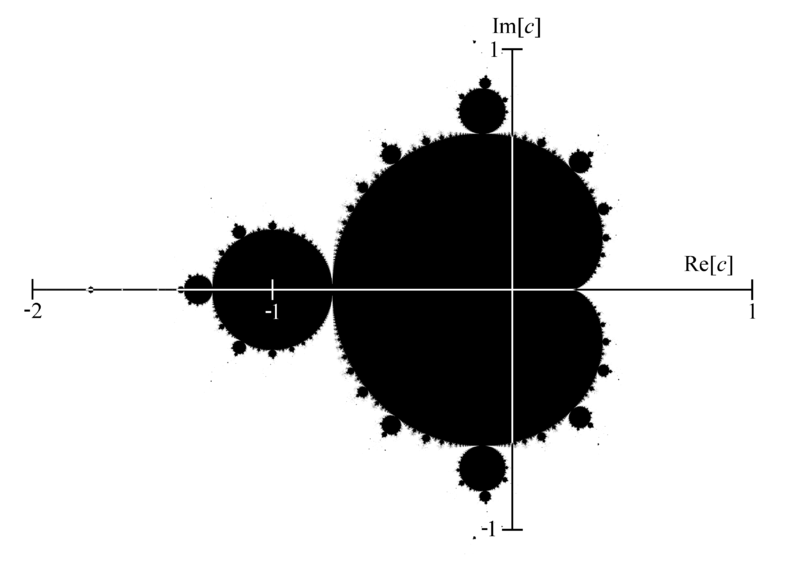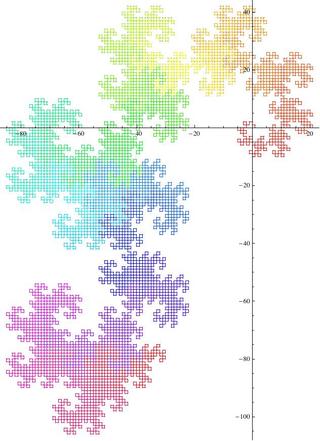Physicist: There are a lot of ways.
A fractal is just a structure that stays interesting no matter how far you zoom in. More than that, generally you can’t tell how far you’ve zoomed in (it looks the same at many different size scales). Making up new fractals is surprisingly easy.
The most famous one (that you’ll find on posters in dorm rooms) is the “Mandelbrot set”, followed by the “Sierpinski Triangle”. I haven’t taken a survey, but these seem to be the most popular.
It’s pretty straightforward how the Sierpinski triangle is made: make a triangle, put three triangles in its corners, put three triangles in those triangle’s corners, etc. This sort of idea: take a shape and then populate it with smaller versions of itself, is arguably the most common way to generate fractals.
The Mandelbrot set on the other hand involves complex numbers and computing power that wasn’t available until the ’80s.

The Mandelbrot set is the black region. When you zoom in on the edge of the black area you'll find that the same patterns show up over and over no matter how far you zoom in.
To determine if a point is in the Mandelbrot set, start with the recursion:
zn+1 = zn2 + c
z0 =0
This means “square what you’ve got, add c, then take the result, square it, add c, then take the result, …”
For different values of c the string of numbers you get out does different things. For example;
for c = 1, you get: 0, 1, 2, 5, 26, 677, … (that’s 0, 1=02+1, 2=12+1, 5=22+1, …)
for c = -0.5, you get: 0, -0.5, -0.25, -0.4375, -0.30859375, -0.404769897, …
The Mandelbrot set is defined as the set of values of c that lead to strings of numbers that stay bounded. So, c=-0.5 is in the set because the string of numbers it makes stays in more or less the same place (it stays between -0.5 and 0 forever). But c=1 is not in the set because its string of numbers blows up.
It’s a little more complicated because you actually consider complex numbers (which is why the picture you get is in a plane).
Finally, the set itself isn’t terribly interesting, but its boundary is. The boundary between what’s in the set and what’s not (what generates a string of numbers that behaves, as opposed to a string that blows up) is infinitely squiggly.
Almost every time you see the Mandelbrot set, colors are included that indicate how fast the strings generated by numbers not in the set blow up. Also, without colors it’s boring.
Another classic is the Dragon Curve:
The Dragon Curve is what you get what you fold a piece of paper in the same direction over and over (forever), and then unfold it at 90° angles.
Long story short: there are many ways to create fractal patterns, but it’s not always easy to guess what technique will lead to a fractal until you try it.











I always like looking through Wikimedia’s list of images of fractals. They all link back to the wikipedia pages that include them, too, so you can find out how they’re all built. http://commons.wikimedia.org/wiki/Fractal
BTW, have you heard about Jason Padgett, aka the fractal guy? http://neurobonkers.com/2011/05/16/jason-padgett/
Wow, thanks for your help teaching me the WAY OF THE FRACTALS
“colors are included that indicate how fast the strings generated by numbers not in the set blow up”
But how are those colors produced/acquired?
This doesn’t answer the question in general. So here’s my general answer:
Fractals are made by recursive processes, that is, processes which refer to itself in this way or another. This gives us two things:
1. We can repeat it forever, because the process is not limited in principle.
2. Self-reference produces self-similarity, because when something is made by using its current state, it will contain parts of itself in its shape. This is why all fractals seem to be self-similar in some way and contain fragments of themselves at some smaller/bigger scale.
@Name: Just count how many turns you need to do before you’ll get overboard and map it into a color from a 256-color palette (you can start with gray scale and then remap these colors to some cool colorful gradients). This only raises one more question: how do you know the recursion will be infinite instead of getting back after, say, 10000 turns? Well, there’s a mathematical proof which says that the entire Mandelbrot set fits into a circle of radius 2. So if your numbers get bigger than that, you can be sure they won’t return anymore. So just count how many turns you need to make before escaping the radius-2 circle.
OMG THIS WAS SO HELPFUL FOR MY RESEARCH PROJECT FOR MY FIRST YEAR OF PRESCHOOL!!!!!! 10/10! WOULD RECOMMEND BEST WEBSITE EVER GREAT WORK BLACK MARKET DEVS KEEP IT UP!!!!!
So um Im like rilly drunc rite now butt u gysss suckk attt make een goood n hepful connten so oooolikeeee suk myiiiy ballzzz u no?>?/fg/j/m
u hav no life and a smol pp. Also learn how to get a free Tesla at this website: https://www.youtube.com/watch?v=IO9XlQrEt2Y
I love u all and I also made out with Scooby Doo. So I guess I love him more. And right now I think I need to be at ur mums house to um………. Bake cookies, totally….. so toodles. Also Derek I’ve always loved u.